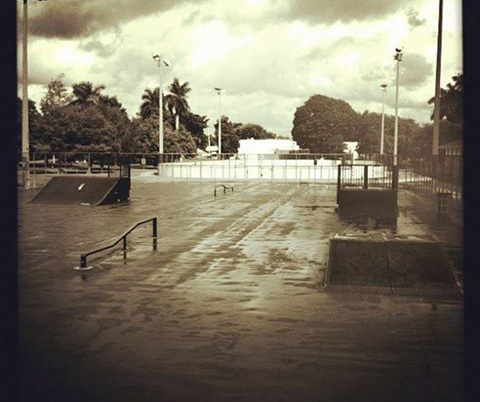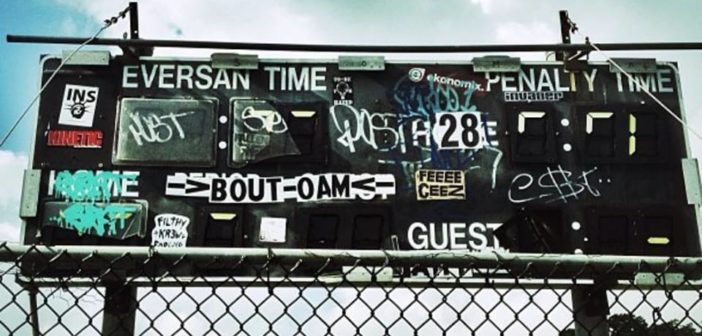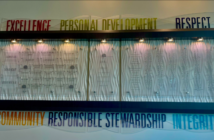Since the 1960s, skateboarding has grown to enormous popularity in the United States, particularly among children. It is understandable that some adults do not want to take the risk of a skateboarding teenager injuring herself while on their property because then they would have liabilities to handle. To those adults, the solution is simple: build a skate park for the kids to keep them off of private property. To many, this seems like a win-win, and the common thought is that the skate park will dramatically improve recreation in the community by giving kids a place to skate that is social and free from harassment. However, adults may not know that more often than not, when communities build skate parks, children and teens who skate, lose.
Most schools across the country have banned possessing and riding skateboards on the grounds. Public libraries, private businesses and various other institutions have also hung their mocking “skateboarding is cool, but not here” signs in the last decade or so. Confusingly, the famous Hollywood Beach Broadwalk in Hollywood, Florida, has held a ban on skateboards and longboards since approximately 2012, despite allowing other forms of nonmotorized transportation such as bikes and roller skates to cruise the beach without issue. Skateboarding has always carried with it a stigma that turns off the older generation. Most see building a skate park as a kind mission to benefit the children, but it is truly a thinly veiled excuse to exclude a subculture. The bicycle has been around five times as long as the skateboard.
Cyclists ride right next to speeding cars on busy roads on a daily basis, while skateboarders often take to parking lots, and the difference in the statistics is clear. According to the National Safety Council (NSC), 818 people died in bicycle crashes in 2015, while only 40 people died of skateboarding-related injuries that year. So why hasn’t there been a nationwide push to get cyclists off the streets and confine them to their very own shiny new slabs of cement in underdeveloped parts of their cities? When it comes to the perceived problem with skateboarders, demographics is more of a factor than suburban adults would like to admit.
Seventy percent of skateboarders are under 18 years old, and 77.1 percent are male, according to publicskateparkguide.org. Skateboarders are primarily teenage boys, while cyclists are primarily adult commuters, according to Statista. Skateboarders also have always held a reputation for being rebels that reject the status quo of suburban America, and there are a lot of biases and stigma that surround that concept.

The opening of a skate park, while not a catch-all solution, can still be a positive thing, as long as the area is maintained. An example that is very local to University Campus is the Zephyrhills Skate Park. Park, which opened in 2015. @geoRodriguez2
The reason that public skate parks, or free parks as skaters refer to them, often do not work is that city officials forget about them. It’s a classic scenario. In Hollywood, Florida, an old roller hockey rink at Stan Goldman Memorial Park by a canal near Interstate 95 was converted into a skate park around 2008. At first, kids loved it, but after a couple of years, it became very run down and unsafe. It became a spot for the homeless population to sleep at night, the lights never came on at dusk and parents stopped letting their children go there. In 2016, the city removed the skate ramps and converted the space into tennis courts after residents complained that the area had become dangerous. It’s a vicious cycle that’s happened across America countless times.
In 2011, the City of Dania Beach, Florida, decided to convert their old roller hockey rink at Frost Park into a skate park as well. After an enormous community effort to save the park last year, the city failed their local skate scene. Groove Surf & Skate, a Dania Beach shop for all gear related to surfing and skating, put up a sizable $10,000 donation toward lighting and revamping the park’s Circus Bowl. Shortly thereafter, Dania Beach Parks and Recreation bulldozed the park, citing that their partners hadn’t maintained the ramps. Months after the park was closed and converted to tennis courts just like the Hollywood free park and Groove Surf & Skate was forced to close its doors. When skaters are allowed to do their thing, they do more good than bad for local businesses.
The scene loves to get gear from independent companies. According to Skater Review, 77 percent of skateboarders prefer to shop with small specialty brands rather than the top brand names that are on the market. Since fostering its community of skateboarders in 2001 by hosting ESPN’s X-Games, ushistory.org cites that Philadelphia has seen dramatically increased skateboard tourism with 250,000 visitors booking hotel rooms and buying food and retail items on the day of the games. Since that event, the city has embraced the skate culture, which has led to increased enrollment in their local colleges and universities, more small businesses catering to skateboarders and artists and increased interest from the media and big business.
The opening of a skate park, while not a catch-all solution, can still be a positive thing, as long as the area is maintained. An example that is very local to University Campus is the Zephyrhills Skate Park, which opened in 2015. Teenagers are still disheartened to have been kicked out of favorite street skate spots, but at least they have a satisfactory alternative. “Once I started to skate the park more, I definitely began to skate the street less because of the ease and accessibility of the park,” said Zephyrhills High School Senior Jacob Rood. “It has better features than other street spots around town. It’s also more social than skating the streets. I’ve made so many friends at the park that I know pretty much anyone who shows up.” Rood, who has been skating the park since it opened also attests that the facility is very well maintained by the city, even taking time to clean any graffiti and repair any property damage as soon as it occurs by closing the park for a day. This policy is cited on their public website: “All forms of graffiti, tagging, or other means of defacing or damaging City property is strictly prohibited. Such activity will result in closure of the Park until it can be cleaned or repaired. Offenders will be prosecuted to the full extent of the law.” They also have strict policies against behaviors that would make the park unsafe for children: “Use of drugs, alcohol, profanity, abusive or foul language, loud music, glass containers, smoking or other tobacco use is strictly prohibited and shall result in automatic and permanent expulsion from the Park.” Cities around the country have a lot to learn about priorities from The City of Zephyrhills before placing any further skateboard bans.





